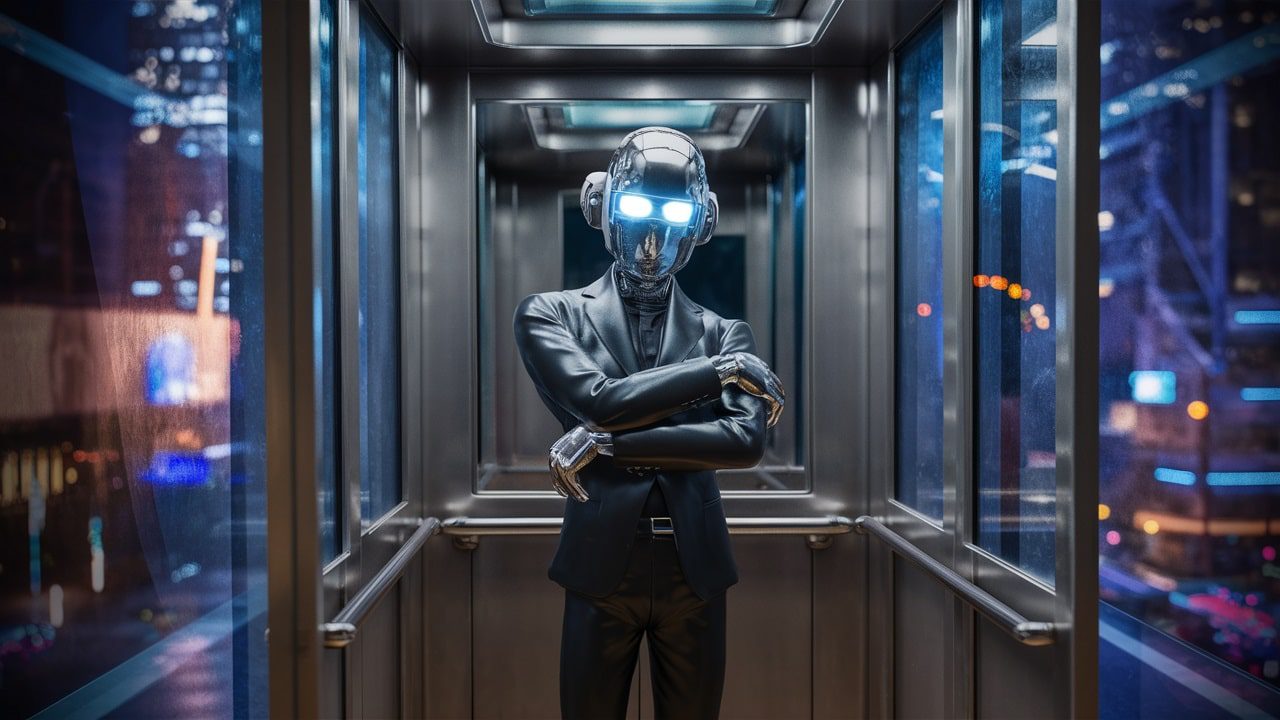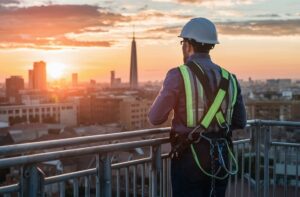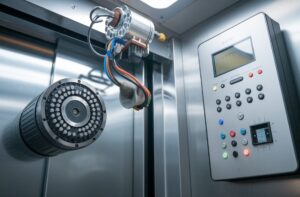AI Elevator Intelligence
Artificial intelligence (AI) is becoming increasingly vital for boosting productivity in various sectors. Companies are utilizing AI-driven technologies to enhance workflows, improve efficiency, and optimize resource usage.
Incorporating the right productivity strategies, such as employing AI-driven automation tools like robotic process automation and natural language processing, can save time and elevate the quality of work. These technologies automate routine tasks and minimize human errors by enabling machines to rapidly perform specific activities.
As urban populations grow, so too do expectations for more livable buildings. This shift has increased the reliance on artificial intelligence (AI) by engineers and facilities managers to meet these demands.

Understanding Productivity and Its Key Influencers
First, we need to understand how productivity is measured. The output produced per unit of input, typically expressed as a ratio. In both business and economics, productivity serves as a crucial gauge of a company’s or a nation’s efficiency in transforming resources into goods and services.
It is instrumental in assessing the effectiveness of resource use, fostering growth, and enhancing living standards.
Several critical factors influence productivity:
Technology: Advances in technology, including automation and sophisticated software, significantly enhance productivity by streamlining operations, minimizing errors, and saving time. Artificial intelligence (AI), as a component of modern technology, plays a pivotal role in boosting productivity.
Potentiality: Productivity is largely dependent on the knowledge, skills, and talents of the worker. Productivity is increased when workers are skilled and knowledgeable, especially when it comes to utilizing technical solutions.
Applied Techniques: Strategic planning, organization, and clear communication are examples of effective management techniques that have a significant impact on production. Productivity rises and resource management is enhanced by strong leadership and wise decision-making.
Facilities: Reliable and robust infrastructure, including transportation and communication networks, bolsters productivity by alleviating logistical challenges and facilitating the smooth transfer of goods and information.
Integrating AI into business operations and enhancing productivity in elevator industry that necessitates a thorough understanding by adapting to new technologies and productivity methods.
Despite these challenges, the potential advantages of AI, such as cost reduction, resource optimization, and enhanced manufacturing productivity, make it a worthwhile investment.
Impact on Elevator Industry
Enable Smooth Riding Experience
The use of smart technology is widely promoted after the pandemic to create a “smoother” elevator experience. The device can be fully automated and personalized. You can call the elevator, coordinate the elevator by phone or smart watch. You can plan your journey to automate the entire experience and make travel more convenient. The end result is minimal waiting time. Elevators are programmed to work in harmony with passengers.
AI-based dispatch systems utilize heuristic algorithms to manage elevator distribution effectively. By analyzing real-time passenger traffic and predicting elevator demand, these systems can optimize elevator assignments to floors, adapting to the number of users and their destination floors continuously.
Machine learning facilitates the predictive capabilities of these systems, improving:
- Passenger traffic forecasting
- Elevator stop predictions
- Daily usage patterns
- Automatic performance adjustments
For instance, by anticipating demand peaks and preparing elevators ahead of time, predictive algorithms grounded in historical data can cut wait times by as much as 10%. In order to avoid overcrowding, technologies such as microwave radar on floor displays also assist in predicting and managing elevator capacity at each stop.
Third Eye Sensors
Installed with short-wavelength technology, Opti Sense sensors count people behind each call to better align elevator operations with actual demand, as noted by the International Facility Management Association.
Remotely Commanding System for seamless experience
The pandemic has accelerated the adoption of smart technologies for a seamless, automated elevator experience. Users can remotely call and command elevators via smartphones or smartwatches, significantly reducing wait times and personalizing travel.
Auto-Adjust Features
AI systems incorporate a digital twin—a virtual model of the building and its elevators—to simulate and optimize traffic flow. By analyzing sensor data in real time, AI can predict patterns and fine-tune operations to decrease wait times and enhance efficiency.
Rising Demand: The vision of smart cities is evolving, driven by advances in science and technology.
People now expect:
- Increased efficiency through optimized building operations to reduce carbon footprints, enhance amenities, and maximize leas ability.
- Enhanced elevator efficiency with direct routing to floors, increased capacity, and minimized wait times. Post-pandemic, additional needs have emerged:
- Convenience: Elevators that offer personalized, intuitive, and touchless interactions.
- Flexibility: Buildings designed for multipurpose use that allow for easy modifications and upgrades in elevator features to meet diverse requirements.
Data scientists are deploying AI, machine learning, and heuristic algorithms to address these growing needs.
User Interface Innovations: AI is revolutionizing how users interact with elevators:
- Voice Control: AI-powered voice systems allow hands-free operation using natural language, enhancing accessibility.
- Facial Recognition: This technology enhances security by verifying user identities and managing access.
- Touchless Controls: Gesture detection technologies enable users to select floors or open doors without physical contact, reducing hygiene risks.
- Personalized Experiences: AI can tailor elevator settings such as lighting, music, or temperature to individual preferences.
- Virtual Assistants: These AI tools provide real-time information and assistance within the elevator, improving user experience.
Enhanced Integration: APIs enable elevators to integrate with other building systems for data sharing and coordinated operations. This interoperability allows for real-time adjustments to elevator behavior based on traffic patterns, energy use, and maintenance schedules. Building owners can customize elevator functions to better serve tenants and optimize building performance.
Conclusion
As AI technology advances, it is crucial for organizations to ensure that their AI implementations are transparent, accountable, and equitable. Adopting these principles will facilitate the responsible use of AI and maximize its benefits for businesses. Its application in elevator systems is making buildings smarter, safer, and more adaptable to the needs of modern urban life.






Pingback: Artificial Intelligence in Small Elevators
Pingback: Advanced Elevator Solutions: Enhancing Efficiency and Safety 2030
Pingback: Elevator Access Control: Tech Behind Card Swipe Elevators 4980